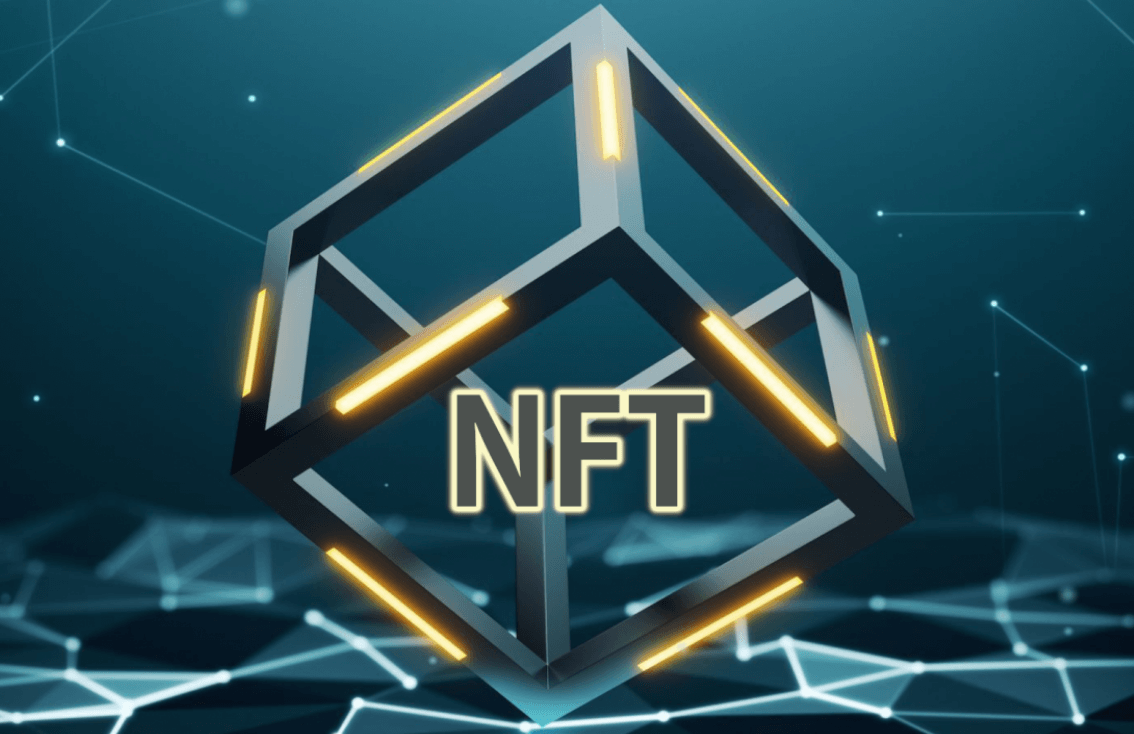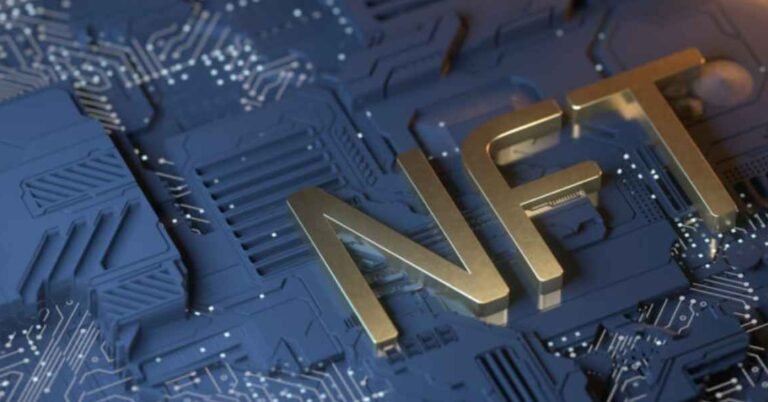The world of Non-Fungible Tokens (NFTs) has revolutionized how digital creators monetize their work. If you’re wondering how to create and sell NFTs for beginners, you’ve come to the right place. This comprehensive guide will walk you through every step of the NFT creation and selling process, from understanding what NFTs are to making your first sale. Whether you’re a digital artist, photographer, musician, or someone with creative ideas, learning how to create and sell NFTs for beginners can open up new revenue streams and connect you with a global marketplace of collectors. The NFT market, while volatile, continues to offer opportunities for creators who understand the fundamentals and approach it strategically.
What Are NFTs and Why Should Beginners Care?
Non-Fungible Tokens (NFTs) are unique digital assets that exist on blockchain networks, primarily Ethereum. Unlike cryptocurrencies such as Bitcoin, NFTs cannot be exchanged on a one-to-one basis because each token has distinct characteristics and values. Think of NFTs as digital certificates of ownership and authenticity for digital content.
For beginners entering the NFT space, understanding this uniqueness is crucial. When you create an NFT, you’re essentially minting a digital certificate that proves ownership and authenticity of your digital creation. This could be digital art, music, videos, memes, or even tweets.
The appeal of NFTs lies in their ability to provide scarcity in the digital world. Before NFTs, digital files could be copied infinitely without any way to prove which was the “original.” NFTs solve this problem by creating verifiable digital ownership through blockchain technology.
Current NFT Market Landscape
The NFT market has experienced significant growth and evolution since its mainstream breakthrough in 2021. While the market has seen fluctuations, it remains a viable platform for creators to monetize their digital work. Popular NFT marketplaces like OpenSea, Rarible, and Foundation continue to facilitate millions of dollars in transactions monthly.

Understanding market trends is essential for beginners. The most successful NFT creators often focus on building communities around their work rather than just creating one-off pieces. This community-driven approach has proven more sustainable than the initial hype-driven sales of 2021-2022.
Essential Tools and Prerequisites
Before diving into NFT creation, beginners need to understand the basic requirements and tools necessary for success in the NFT space.
Digital Wallet Setup
Your first step is setting up a cryptocurrency wallet that supports the blockchain where you plan to mint your NFTs. MetaMask is the most popular choice for beginners due to its user-friendly interface and wide compatibility with NFT marketplaces.
To set up MetaMask:
- Visit the official MetaMask website and download the browser extension
- Create a new wallet and securely store your seed phrase
- Fund your wallet with cryptocurrency (usually Ethereum) to cover gas fees
- Connect your wallet to your chosen NFT marketplace
Remember that your seed phrase is essentially the key to your digital assets. Store it securely offline and never share it with anyone.
Choosing Your Creation Tools
The beauty of NFT creation is that you can use virtually any digital creation tool. Popular options include:
For Digital Art:
- Adobe Photoshop or Illustrator
- Procreate (iPad)
- GIMP (free alternative)
- Blender (3D art)
For Music and Audio:
- Audacity (free)
- GarageBand (Mac)
- Logic Pro or Pro Tools (professional)
For Video Content:
- Adobe After Effects
- DaVinci Resolve (free)
- Final Cut Pro
The key is using tools you’re comfortable with and that can produce high-quality output in formats supported by NFT marketplaces (typically JPEG, PNG, GIF, MP4, or MP3).
How to Create and Sell NFTs for Beginners
Now let’s dive into the detailed process of creating and selling your first NFT.
Create Your Digital Asset

Start by creating original digital content that you own completely. This is crucial because minting NFTs of copyrighted material you don’t own can lead to legal issues and marketplace bans.
Consider these popular NFT categories for beginners:
- Digital illustrations and artwork
- Photography collections
- Animated GIFs
- Music and audio clips
- Digital collectibles
- Utility-based NFTs (offering real-world benefits)
Focus on quality over quantity. A single, well-crafted piece often performs better than multiple low-effort creations. Spend time refining your work and ensuring it represents your best creative output.
Choose the Right Blockchain and Marketplace
While Ethereum remains the most popular blockchain for NFTs, other options like Polygon, Solana, and Binance Smart Chain offer lower transaction fees, making them attractive for beginners.
Popular NFT Marketplaces for Beginners:
OpenSea: The largest NFT marketplace with the most diverse selection. It supports multiple blockchains and has relatively simple minting processes.
Rarible: A community-driven marketplace that offers governance tokens to active users. It’s particularly good for creators who want to build a following.
Foundation: A more curated platform that focuses on high-quality digital art. It requires an invitation or community approval.
SuperRare: Another curated platform focused on unique, high-quality digital art pieces.
Each marketplace has different fee structures, audience demographics, and features. Research thoroughly before committing to one platform.
Mint Your NFT
Minting is the process of creating your NFT on the blockchain. Here’s how to mint on OpenSea (the process is similar on other platforms):
- Connect Your Wallet: Link your MetaMask wallet to OpenSea
- Create a Collection: Set up a collection to organize your NFTs
- Upload Your Asset: Add your digital file, ensuring it meets the platform’s requirements
- Add Metadata: Include a compelling title, description, and relevant tags
- Set Properties: Add traits and characteristics that make your NFT unique
- Choose Your Blockchain: Select Ethereum for maximum exposure or Polygon for lower fees
- Complete the Minting: Pay the gas fees and confirm the transaction
The minting process typically takes a few minutes to complete, after which your NFT will be visible on the marketplace.
Set Your Pricing Strategy
Pricing your first NFTs can be challenging. Research similar works in your category and consider these pricing approaches:
Fixed Price: Set a specific price for immediate purchase. Auction: Let buyers bid, potentially driving up the price. Bundle Sales: Offer multiple pieces together at a discount
For beginners, starting with modest prices (0.01-0.1 ETH) can help build an initial sales history and credibility.
Advanced Strategies for NFT Success
Building Your Brand and Community
Successful NFT creators understand that building a community is more important than individual sales. Here’s how to build your NFT brand:
Social Media Presence: Maintain active profiles on Twitter, Instagram, and Discord. Share your creative process, engage with other creators, and build relationships with collectors.
Consistent Style: Develop a recognizable artistic style that makes your work instantly identifiable.
Storytelling: Create narratives around your NFT collections. Collectors often buy into the story and vision behind the art, not just the visual appeal.
Utility and Benefits: Consider offering additional value to NFT holders, such as:
- Access to exclusive content
- Physical merchandise
- Future airdrops
- Community membership benefits
Understanding Gas Fees and Timing
Gas fees are transaction costs on the Ethereum network that can significantly impact your profitability. These fees fluctuate based on network congestion, so timing your minting and sales strategically can save money.
Monitor gas prices using tools like ETH Gas Station and consider minting during off-peak hours (typically weekends and late nights in US time zones) when fees are lower.
Marketing Your NFTs Effectively
Creating great art is only half the battle; effective marketing is equally important:
Pre-launch Hype: Build anticipation before minting by sharing work-in-progress content and engaging with your audience.
Cross-platform Promotion: Share your NFTs across multiple social media platforms and NFT communities.
Collaborate with Other Creators: Partner with established NFT artists for cross-promotional opportunities.
Participate in NFT Communities: Join Discord servers, Twitter Spaces, and other community gatherings to network and learn.
Read More: How to Create NFT Art: A Step-by-Step Guide for Beginners 2025
Common Mistakes to Avoid When Starting with NFTs
Rushing the Process
Many beginners rush to mint their first NFT without proper preparation. Take time to:
- Research the market thoroughly
- Understand the technical requirements
- Build a small social media following first
- Create high-quality content worthy of purchase
Ignoring Copyright and Legal Issues
Only mint NFTs of content you own or have explicit rights to use. This includes:
- Original artwork you created
- Photographs you took
- Music you composed
- Licensed content with proper permissions
Using copyrighted material without permission can result in DMCA takedowns and legal action.
Overestimating Initial Success
The NFT market is highly competitive, and success rarely happens overnight. Set realistic expectations and focus on long-term growth rather than immediate profits.
Neglecting Community Building
Many creators focus solely on creating and listing NFTs without building relationships with potential buyers. Engaging with the community is essential for sustained success.
Technical Considerations and Best Practices
File Format and Quality Standards
Different marketplaces support various file formats, but these are generally accepted:
- Images: PNG, JPEG, GIF (up to 10MB typically)
- Audio: MP3, WAV (up to 10MB typically)
- Video: MP4 (up to 100MB typically)
- 3D Models: GLB format for some platforms
Always create and maintain high-resolution versions of your work. Many creators save a low-resolution version of the NFT and offer high-resolution files as unlockable content for buyers.
Metadata and SEO for NFTs
Optimize your NFT listings for discoverability:
- Use descriptive, keyword-rich titles
- Write compelling descriptions that tell a story
- Include relevant tags and categories
- Add detailed properties and traits
Good metadata helps your NFTs appear in relevant searches both on the marketplace and in external search engines.
Smart Contract Considerations
Most beginners use the marketplace’s default smart contracts, but understanding the basics helps:
- Royalties: Set percentage fees you’ll receive from secondary sales
- Ownership Rights: Understand what rights buyers receive
- Transferability: Ensure your NFTs can be transferred between wallets
The Business Side of NFT Creation
Tax Implications
NFT sales are generally considered taxable income in most jurisdictions. Keep detailed records of:
- Creation costs (software, hardware, time)
- Minting fees and gas costs
- Sale prices and dates
- Any cryptocurrency received
Consult with a tax professional familiar with cryptocurrency and NFT taxation in your country.
Scaling Your NFT Business
As you gain experience, consider these growth strategies:
Collection Drops: Create themed collections rather than individual pieces. Collaborations: Work with other artists, brands, or influencers. Licensing Opportunities: License your NFT art for merchandise or media use. Educational Content: Share your knowledge through courses or consultations
Diversifying Revenue Streams
Don’t rely solely on primary NFT sales. Successful creators often have multiple income streams:
- Secondary sale royalties
- Physical merchandise
- Digital products and courses
- Commission work
- Speaking engagements
Future Trends and Opportunities in NFTs
Emerging Technologies
Stay informed about developing trends that could impact your NFT strategy:
AI-Generated Art: Tools like Midjourney and DALL-E are changing how art is created. Augmented Reality (AR) NFTs: Pieces that can be viewed in AR environments. Interactive NFTs: Tokens that change based on external factors or user interaction.n Cross-Chain Compatibility: NFTs that work across multiple blockchains
Utility-Focused NFTs
The market is shifting toward NFTs that provide ongoing value beyond just ownership:
- Gaming assets and characters
- Access tokens for exclusive events
- Membership benefits and rewards programs
- Fractional ownership of real-world assets
Environmental Considerations
As environmental awareness grows, consider eco-friendly options:
- Proof-of-Stake blockchains like Ethereum 2.0
- Carbon-neutral marketplaces
- Environmental offset programs
Conclusion
Learning how to create and sell NFTs for beginners opens up exciting opportunities in the digital creative economy. While the process may seem complex initially, breaking it down into manageable steps makes it accessible to anyone willing to learn and invest time in their craft.
Success in the NFT space requires more than just creating digital art—it demands understanding your audience, building genuine community connections, and consistently producing quality work. Remember that the most successful NFT creators focus on long-term growth rather than quick profits.


